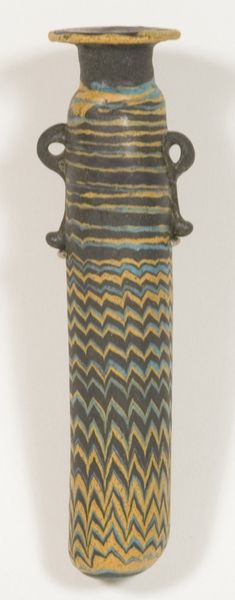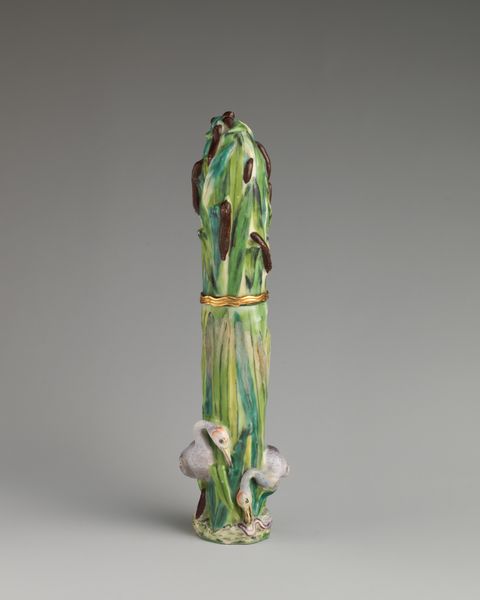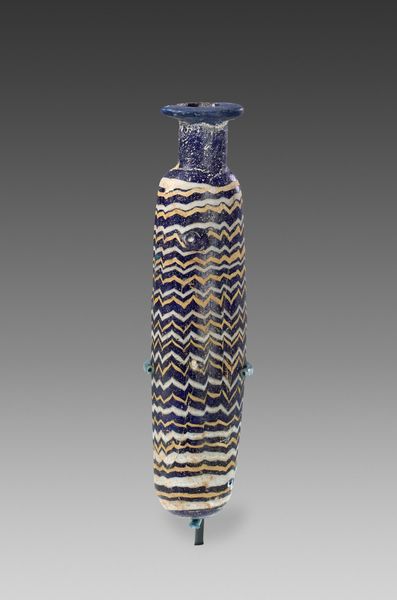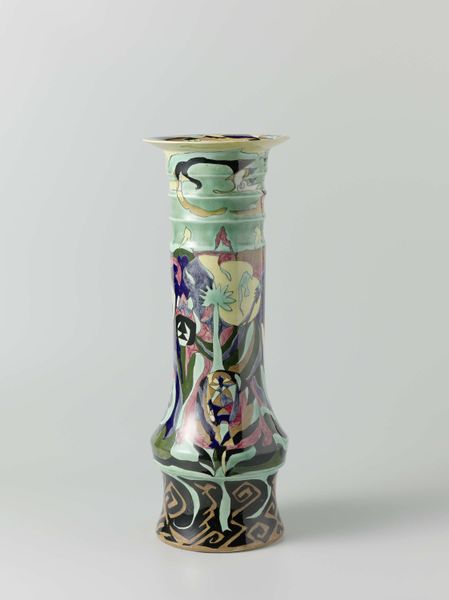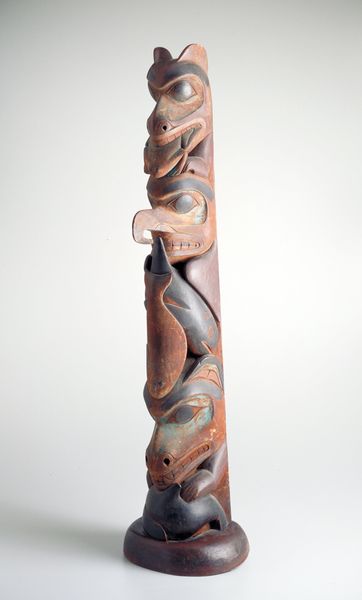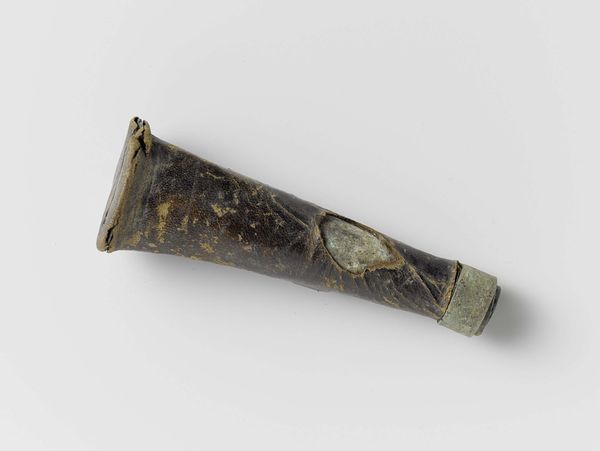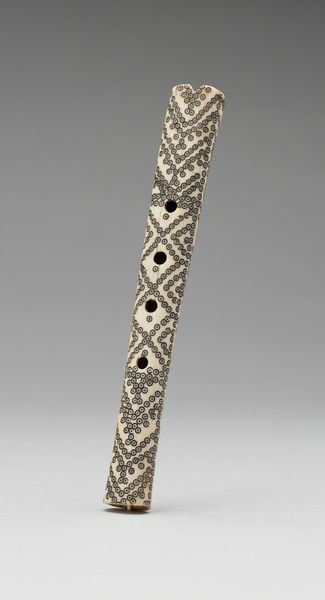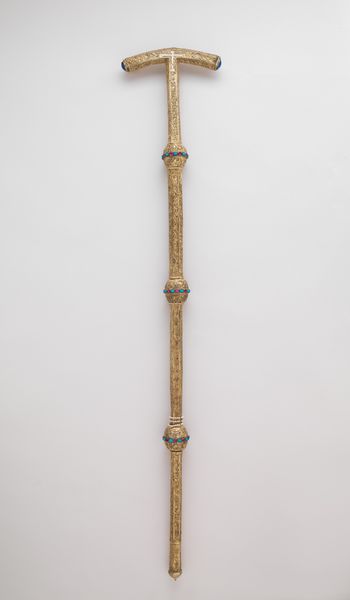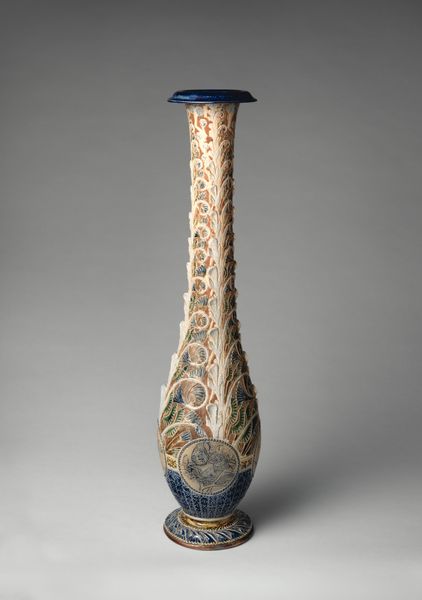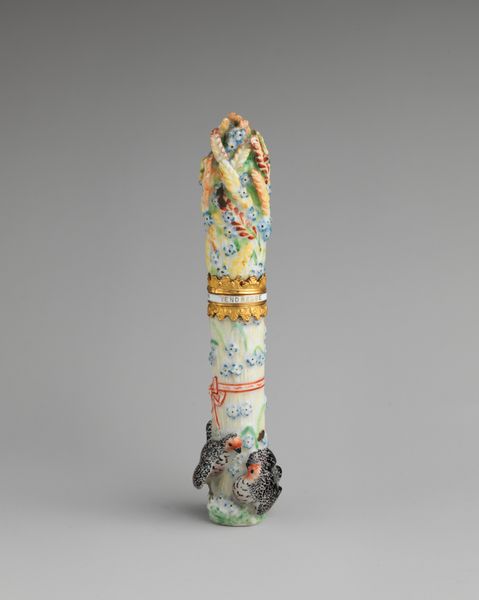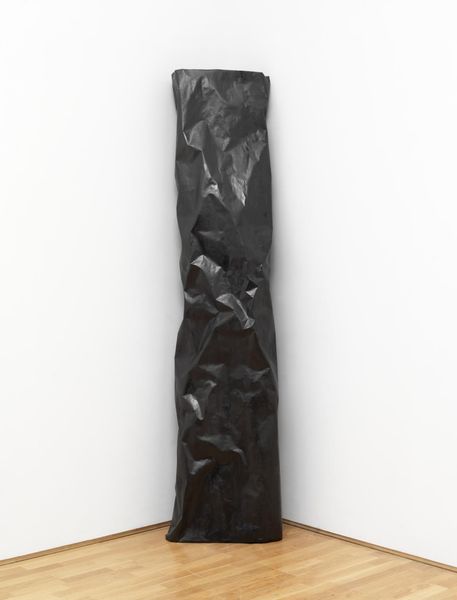
Alabastron (Container for Scented Oil) c. early 2th century
0:00
0:00
glass, sculpture
#
glass
#
geometric
#
ancient-mediterranean
#
sculpture
#
islamic-art
Dimensions: 12 × 2.2 × 2.2 cm (3 1/2 × 7/8 × 7/8 in.)
Copyright: Public Domain
Editor: This object, entitled "Alabastron (Container for Scented Oil)," dates from the early 2nd century. It’s an ancient piece made of glass, currently residing at the Art Institute of Chicago. I’m really struck by the intricate patterns. What can you tell me about this piece? Curator: This is an interesting example of ancient glassmaking. Notice how the swirling patterns weren’t just aesthetic choices. The act of heating, manipulating, and layering the different colors of glass speaks to a specific skillset, a specific mode of production within that society. What kind of labor went into creating these swirling designs? Editor: So, it wasn’t just about beauty? Curator: Beauty is subjective, but the process wasn't accidental. The precise layering and swirling indicate expertise, wouldn't you agree? Think about the social implications of producing these vessels. Who was buying scented oils? What was the role of such objects in ancient culture? Editor: So it’s connected to consumption habits. Were they considered luxury items then? Curator: Absolutely. This wasn't mass production; it was likely specialized, craft-based. How does this relate to our current ideas about glass art versus industrial glass production, or “fine art” versus commodity objects? Can you tell by looking whether that specific type of glass-making production still exists today? Editor: That's fascinating. I hadn't considered the skill and labor involved. I was only looking at the patterns. Curator: Exactly! Seeing art this way shifts our focus from solely aesthetic appreciation to a deeper understanding of its creation, the conditions under which it was made, and its place within a broader social context. Now, when you look at other pieces, will your approach change? Editor: Definitely. I'll be more curious about how things were made. Thanks for helping me explore this fascinating way to approach art history!
Comments
No comments
Be the first to comment and join the conversation on the ultimate creative platform.
